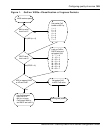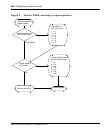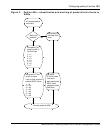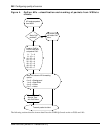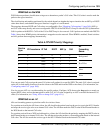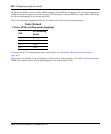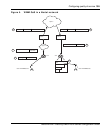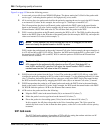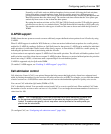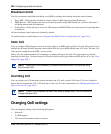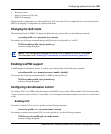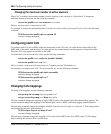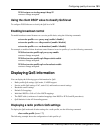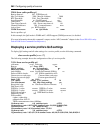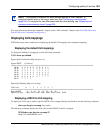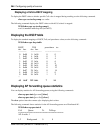
Configuring quality of service 357
Nortel WLAN—Security Switch 2300 Series Configuration Guide
Normally, an AP radio waits an additional number of microseconds following the fixed wait time,
before forwarding a queued packet or frame. Each forwarding queue has a different range of
possible random wait times. The Voice queue has the narrowest range, whereas the Background and
Best Effort queues have the widest range. The random wait times ensure that the Voice queue gets
statistically more access to the air than the other queues.
By setting the random wait time to 0 for SVP, the SVP QoS mode provides SVP traffic the greatest
possible access to the air, on a statistical basis. The QoS mode affects forwarding of SVP traffic only.
The random wait times for other types of traffic are the same as those used when the QoS mode is
WMM.
U-APSD support
WMM clients that use powersave mode can more efficiently request buffered unicast packets from AP radios by using
U-APSD.
When U-APSD support is enabled in WSS Software, a client can retrieve buffered unicast packets for a traffic priority
enabled for U-APSD by sending a QoS data or QoS-Null frame for that priority. U-APSD can be enabled for individual
traffic priorities, for individual clients, based on the client’s request. A client enables U-APSD for a traffic priority by
indicating this preference when (re)associating with the AP radio.
A client can but is not required to request U-APSD for all four traffic priorities. The AP radio still buffers packets for all
traffic priorities even if the client does not request U-APSD for them. However, to retrieve buffered packets for priorities
that are not using U-APSD, a client must send a separate PSpoll for each buffered packet.
U-APSD is supported only for QoS mode WMM.
(To enable U-APSD support, see “Enabling U-APSD support” (page 359).)
Call admission control
Call Admission Control (CAC) is an optional feature that helps ensure that high-priority clients have adequate band-
width, by limiting the number of active sessions AP radios can have for an SSID. For example, you can limit the number
of active sessions on a VoIP SSID to ensure that each call receives the bandwidth required for quality voice service.
You can use CAC with either QoS mode (WMM or SVP).
CAC is disabled by default. You can enable session-based CAC on a service-profile basis. When enabled, CAC limits
the number of active sessions a radio can have to 14 by default. You can change the maximum number of sessions to a
value from 0 to 100.
(To configure CAC, see “Configuring call admission control” (page 359).)
Note. CAC is configured on a service profile basis and limits association to radios only
for the service profile’s SSID. Association to the radios by clients on other SSIDs is not
limited. To ensure voice quality, do not map other service profiles to the radio profile you
plan to use for voice traffic.



